As an indispensable process in modern manufacturing industry, welding has always occupied an important position in the field of material processing. Welding is a complex process involving various disciplines such as arc physics, heat transfer, metallurgy, and mechanics. It involves the heat transfer process, the melting and solidification of metals, the phase change during cooling, welding stress and deformation. And the key issues that designers care about. The welding stress and deformation generated in the welding process not only affect the manufacturing process of the welded structure, but also affect the performance of the welded structure. These defects are mainly caused by unreasonable thermal process during welding. Due to the concentrated instantaneous heat input of high energy, considerable residual stress and deformation will be generated during and after welding, affecting the machining accuracy and dimensional stability of the structure. Therefore, it is of great significance for the quantitative analysis and prediction of the stress field at welding temperature.
Traditional welding temperature field and stress testing rely on the designer's experience or semi-empirical formula based on statistics, but such methods have obvious limitations, and cannot predict the new process prospectively, resulting in a sharp experimental cost Increase, so the use of numerical simulation for welding shows great advantages.
As the world-famous general structural analysis software, ANSYS provides complete analysis functions and a complete material constitutive relationship, providing technical guarantee for welding simulation. This article uses ANSYS as the platform to explain the basic theory and simulation process of welding temperature field simulation, thermal deformation and stress simulation, which provides a certain reference for enterprise designers.
2 Theoretical basis of numerical simulation of weldingThe temperature field, stress and deformation in the welding problem can finally be reduced to solving differential equations. The methods for solving such equations are usually in two categories: analytical methods and numerical methods. Since only a lot of simplifying assumptions are made and the problem is relatively simple, it is possible to obtain the solution of the equation analytically. Therefore, the numerical method is usually used to simulate the welding problem. In the welding analysis, commonly used numerical methods include: difference method, finite element method, numerical integration method, Monte Carlo method.
Difference method: The difference method solves by converting a differential equation into a difference equation. For regular geometric properties and uniform material properties, programming is simple and convergence is good. However, this method is often limited to regular differential grids (squares, rectangles, triangles, etc.). At the same time, the differential method only considers the role of nodes and does not consider the contribution of elements between nodes. It is often used for welding heat conduction, hydrogen diffusion, etc. Research.
Finite element method: The finite element method converts the continuum into a discrete model composed of a finite number of elements, and solves the numerical solution of the discrete model through a displacement function. The method has strong flexibility and wide application range, so it is widely used in the fields of welding heat conduction, welding thermo-elastoplastic stress, deformation and fracture analysis of welding structures.
Numerical integration method: This method uses Simpson's law and other methods to integrate and solve problems that are difficult to find the original function. This method avoids solving complex original function problems, and uses fewer points to obtain higher accuracy.
Monte Carlo method: This method is based on stochastic simulation technology to carry out intact numerical simulation on the problem of stochastic process.
Welding simulation is usually based on the above several theories to simulate welding heat conduction, thermal elastoplastic stress and other issues, and the reasonable choice of heat source function and the calculation of post-weld stress and other issues require designers to choose the appropriate mathematical model.
2.1 Common heat source model for welding numerical simulation
Welding thermal process is one of the main factors that affect welding quality and productivity. Therefore, accurate simulation of welding thermal process is a prerequisite for accurate analysis of welding stress and deformation. In the early analysis of the welding thermal process, the predecessors have done a lot of theoretical research work and proposed a variety of heat source distribution models:
Centralized heat source: Rosenthai-Rykalin formula
As a typical analytical method, this method believes that the heat source is concentrated on one point. This method is only applicable when the study area is far away from the heat source. At the same time, this method cannot describe the distribution law of the heat source, and has a greater impact on the fusion zone and the heat affected zone.
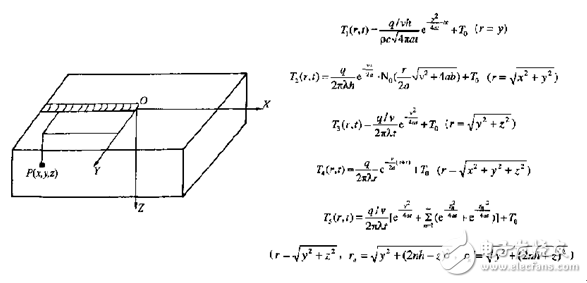
Planar distributed heat source: Gaussian distributed heat source, double ellipse distributed heat source
Gaussian distributed heat source
The Gaussian heat source distribution assumes that the welding heat source has a symmetrical distribution. At low speed welding, the effect is good. When the welding speed is high, the heat source is no longer symmetrically distributed, and the error is large. This method is suitable for the case where the arc stiffness is weak and the arc has little impact on the molten pool.
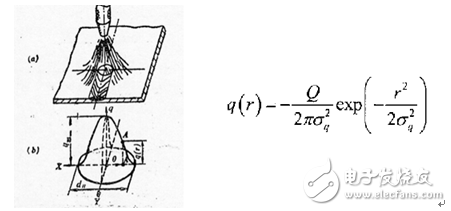
Although the Gaussian distribution gives the heat source distribution, it does not consider the influence of the welding gun movement on the heat source distribution. In fact, due to the different heating and cooling rates of the weld, the heating area in front of the arc is smaller than the heating area behind.
Double ellipse heat source
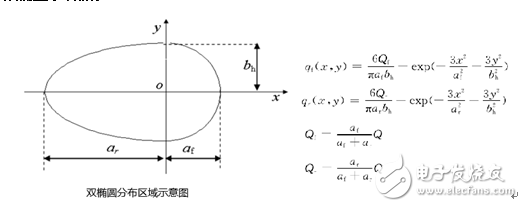
Volume distribution heat source: semi-ellipsoid heat source, double ellipsoid heat source
Semi-ellipsoidal heat source
For melting electrode gas-shielded arc welding or high-energy beam welding, the heat flux density of the welding heat source not only acts on the surface of the workpiece, but also acts along the thickness direction of the workpiece. At this time, the welding heat source should be used as the volume distribution heat source. In order to consider the distribution of arc heat flow along the thickness direction of the workpiece, it can be described by the ellipsoid model
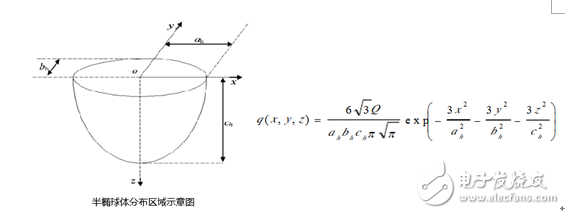
In fact, because the arc moves in the welding direction, the arc heat flow is distributed asymmetrically. Due to the influence of welding speed, the heating area in front of the arc is smaller than that behind the arc; the heating area is not a single semi-ellipsoid symmetrical about the arc center line, but a double semi-ellipsoid, and the shape of the semi-ellipsoid before and after the arc Not the same
Double ellipsoid distributed heat source

2.2 Common methods for welding deformation simulation
The dynamic stress-strain process caused by welding and the subsequent residual stress and residual deformation are important factors that lead to welding cracks and joint strength and performance degradation. Therefore, the following theories have been developed for the calculation of welding deformation and residual stress:
Analytical method: one-dimensional residual plastic deformation analytical method
This method is based on the theory of welding deformation and determines the relationship between the longitudinal deformation of the shrinkage of the welded joint and the welding process parameters and welding conditions. It requires a lot of experience. This method is more suitable for regular beam structures with equal cross sections
Intrinsic strain method: Intrinsic strain can be regarded as a source of residual stress
The inherent strain during welding includes plastic strain, temperature strain and phase change strain. After a welded component undergoes a welding heat cycle, the temperature strain is zero, and the inherent strain is the sum of the plastic strain and the residual amount of phase transformation strain. During welding, the inherent strain exists in the weld seam and its vicinity, so understanding the distribution law of the inherent strain can predict the residual stress and structural deformation with only one elastic finite element calculation, but this method also focuses on the deformation of the structure after welding. It is an approximate method and does not consider the entire welding heat transfer process
Thermo-elastoplastic finite element method: record welding heat transfer process, describe stress and deformation of dynamic process
Thermo-elastoplastic finite element method first analyzes the welding thermal process to obtain the transient temperature field of the welded structure, and then uses this as a result to calculate the welding stress and deformation. Because this calculation is a non-linear calculation process, it has a large amount of calculation and is generally used to study the mechanical behavior of welded joints, rather than to conduct an overall study of large and complex structures.
3 Welding simulation case3.1 Welding simulation based on ANSYS Workbench platform
Laser welding is used for the following components, and ANSYS Workbench is used as the platform to simulate the temperature field and stress field changes of the model.
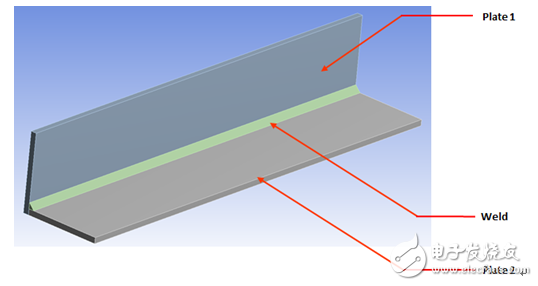
As a unified multi-field coupling analysis platform, ANSYS Workbench supports data collaboration. Therefore, the welding analysis coupling project is established in Workbench as shown in the following figure.
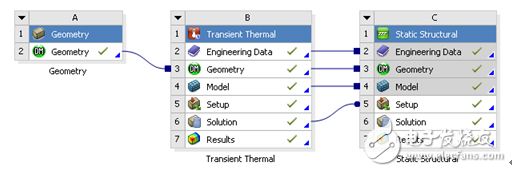
In this example, only to illustrate the welding simulation process as an example, so the material is assumed to be linear elastic structural steel, enter the material parameters in EngineerData as follows:
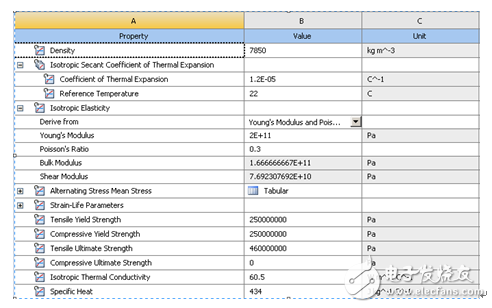
ANSYS Workbench meshes the model based on ANSYS Meshing. The two weldments and welds in this model are divided into hexahedrons. In addition, the software also provides a lot of size funcTIon, local control, etc Function, high-quality meshing for geometric models with different features.
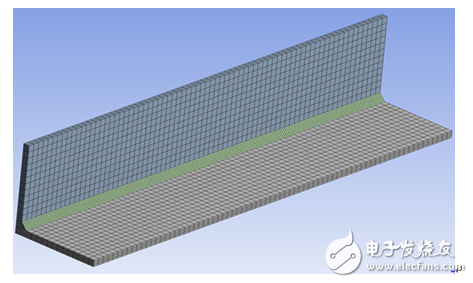
Using the Workbench platform as the basis for transient thermal analysis of the welding process requires the Moving_Heat_Flux plug-in developed based on ANSYS Workbench. The plug-in is embedded in the Workbench interface and provides a mobile heat source distribution method based on the planar Gaussian heat source method. In this plug-in, users can specify parameters such as welding gun movement speed, welding current, power, and welding time. In addition, for the analysis of the heat transfer process, it is necessary to input other boundary conditions such as ConvecTIon required for transient thermal analysis. The welding-related parameters entered in this case are as follows:
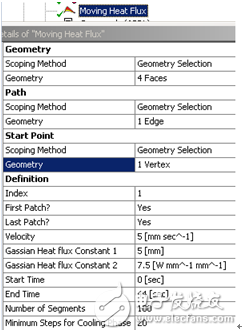
For such large-scale simulation problems, it is recommended to use HPC high-performance computing, which can give full play to the performance of computer hardware and greatly improve the solution efficiency. The final thermal analysis results for welding under this parameter are as follows:
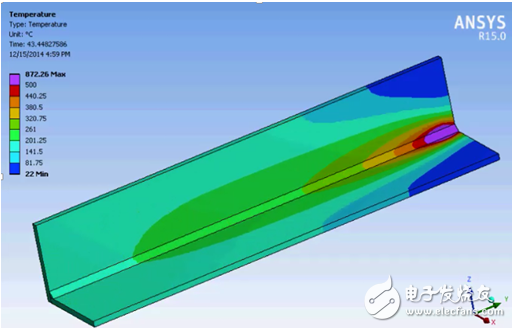
Based on transient thermal analysis, post-weld stress analysis can be performed. Through the coupled analysis process of the ANSYS Workbench established above, the thermal analysis temperature field is transferred to the structural field for stress analysis by means of import load.
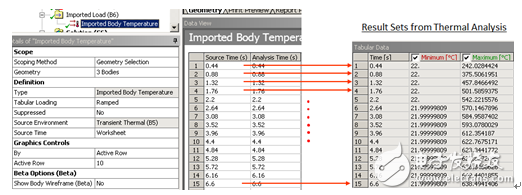
At the same time, the component is constrained according to the actual working conditions, and the stress analysis is performed, and the stress cloud diagram at a certain moment is finally obtained as follows:
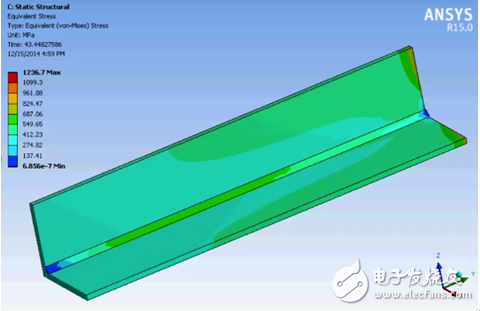
3.2 Welding simulation based on ANSYS classic interface
As mentioned earlier, there are many limitations when using Workbench as a platform for welding simulation. For example, other types of heat source models cannot be selected, so users can perform welding simulation based on ANSYS Classic. When performing welding simulation based on the classic version of ANSYS, it can be carried out in the form of command flow, and the welding parameters can be read in as parameters, which is very convenient for optimizing welding analysis.
In this example, the welding temperature field simulation uses the welding plate size of 200mmX200mmX6mm, the test material is Q235A, and the material parameters are shown in the following table. In order to ensure the penetration, the two steel plates have a 45 ° groove. The welding method is arc welding. The welding parameters are: welding current 180A, arc voltage 20V, welding speed 4.8mm / s, welding heat input 0.75kJ / mm, welding efficiency η = 0.825, and the heat exchange coefficient between structure and air is 15W / ( m ^ 2 * ℃).
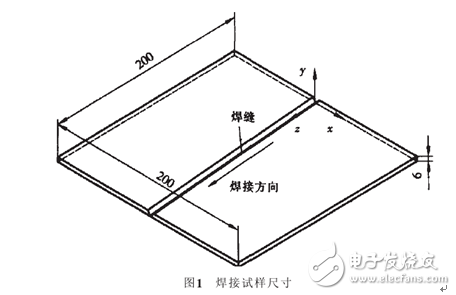
Establish the geometric model of the component in the classic version of ANSYS, using solid70, the established model is shown below:
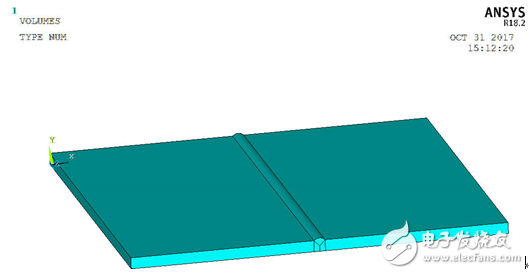
Create a complete material parameter table through the MP command, as shown in the following figure:
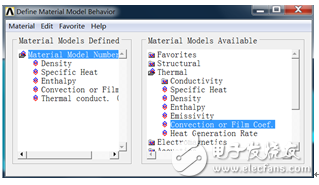
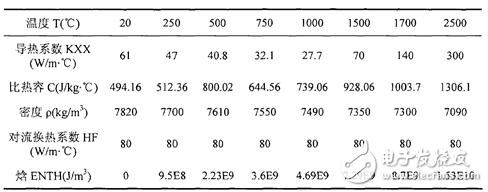
Through commands such as esize, local mesh control is performed on the model to generate a hexahedral mesh and achieve high mesh quality. The finite element model is as follows:
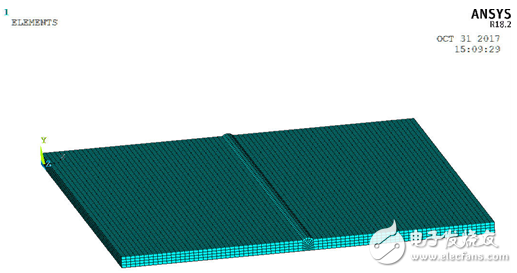
In this example, the Gaussian heat source method is also used for simulation, and the related welding process is expressed in parameters, which provides a basis for later optimization. The typical command flow is as follows:
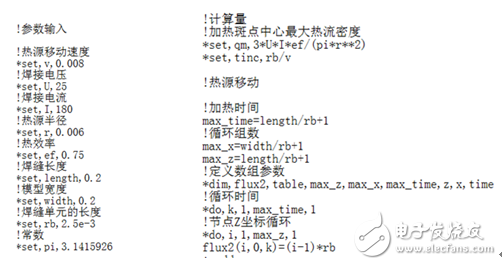
Apply fixed constraints to the bottom of the model, and perform iterative calculation based on the solution parameters set in APDL. The iteration curve is shown in the figure:
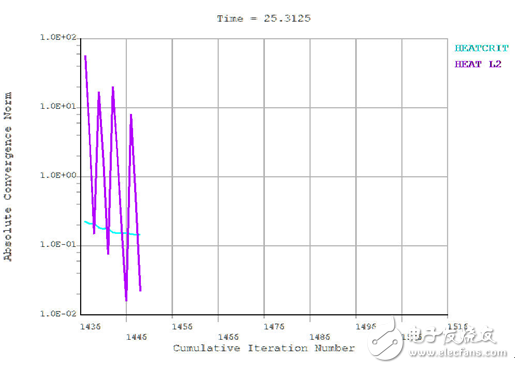
After the solution calculation, the temperature distribution cloud map of the weldment can be obtained, as shown in the figure below:
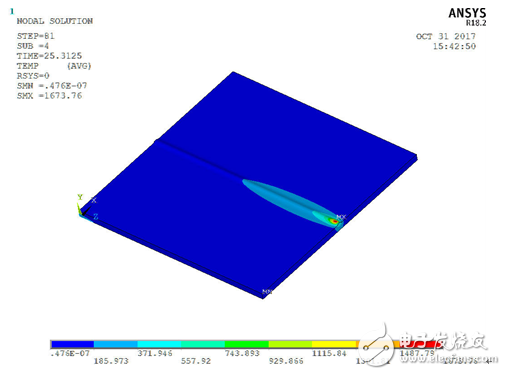
Through the above introduction, the temperature field and stress field simulation of the welding process can be conveniently carried out based on the ANSYS software. At present, only welding simulation in the form of plug-ins is supported in Workbench, and only the heat source distribution method of planar Gaussian heat sources can be considered, such as Need to consider other methods of heat source, APDL programming needs to be based on the classic version of ANSYS. In addition, users can also use the life and death unit to perform welding simulation. It should be noted that the life and death unit is the life and death of the control unit. To simulate the welding process of welding seam. This method can simulate more complicated heat input. Since the heat source distribution and the birth and death unit are two different calculation methods, they cannot be used in superposition.
ANSYS software provides a powerful technical guarantee for welding simulation through complete material constitutive relations and solving capabilities. Therefore, designers can use this to perform welding simulation and provide reference basis for setting welding parameters such as current and voltage, which is reasonable Optimize the welding process.
5050 Single Color Led Strip ,Single Color Led Strip,Single Color Led Strip Lights,Single Colour Led Strip
NINGBO SENTU ART AND CRAFT CO.,LTD. , https://www.lightworld-sentu.com
